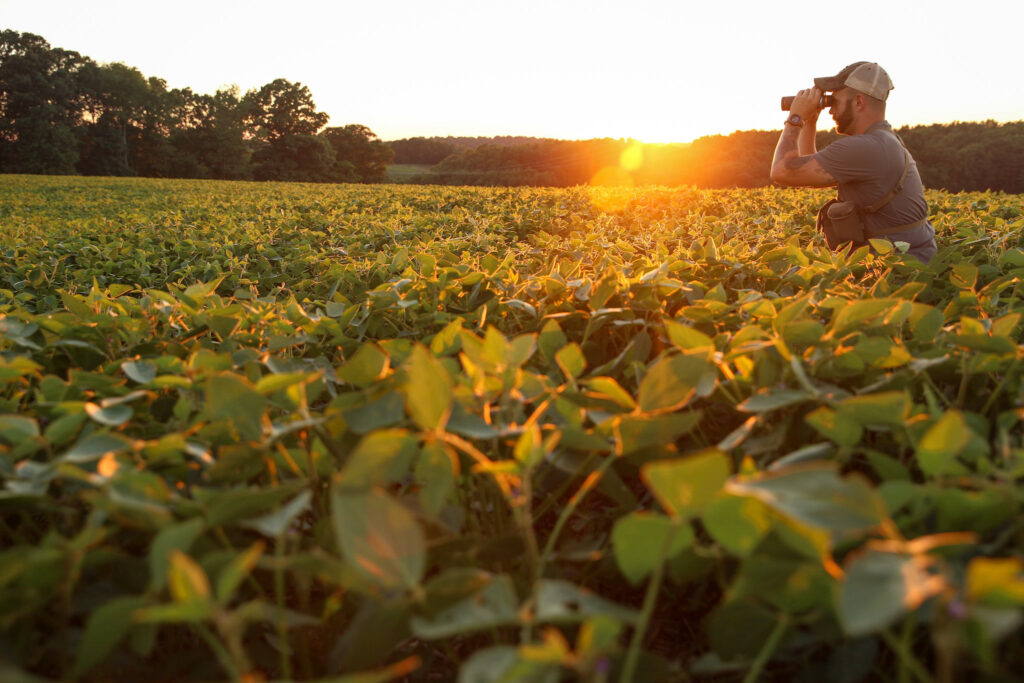You have the key to the gate, but that 150-inch buck isn’t hanging on the wall yet. First, you need to unravel your new whitetail dirt. This expert is ready to help you.
by Clint Casper
As whitetail gurus, we all dream of owning or gaining permission to hunt a piece of property. The ability to manage and hunt a particular piece of ground the way we want to is worth its weight in gold. Dreaming is fun, but when that dream becomes reality, which it can, the real work begins. Now it’s time to figure the property out!
Let’s Get Mapping
When I gain permission to hunt a new whitetail property, I drive into every nook and cranny the property offers using my onX hunt app and Google Earth.
Let me explain my philosophy before someone asks why I’m not immediately putting boots on the ground. First, the time of year dictates how I will scout and learn the property. For example, if it’s late winter, spring, or summer, I’m okay putting boots on the ground as much as possible. But, if it’s close to the season or during hunting season, I want to be much more cautious with my boots-on-the-ground tactics. This is where online scouting is so handy and essential.
With an app like onX Hunt, I can outline the entire property that I can hunt. I can closely look at it in 2-D and 3-D, as well as with the topographical layers. These features will show me much about the property without ever stepping foot on it. Things like saddles, pinch points, inside field edges, oak flats, creek bottoms, south-facing slopes (bedding zones), and more jump to life.
I mark all these spots for reference points when I put boot leather on the ground. I’ll also pay attention to the neighbors’ properties and surrounding areas. This helps put the big puzzle together on deer movement in my area. Again, depending on how close to season I am dictates how much on the ground scouting I do and this map study will certainly narrow down my key points and places that I really need to look at once I do scout on foot.
Deploy The Plastic Army
Another essential thing when figuring out a new property is to install trail cameras. I love using cell cameras (check state regulations) because I can see what’s happening every day in the deer woods. These fancy-to-do devices send images directly to my smartphone. Having cameras out is the equivalent of having multiple people glassing and scouting for me. This is super important on a new piece of property. We want to learn how many deer are in the area, how they use certain areas, and (time of year depending) what the buck quality looks like.

I will start with cameras in low-impact, high-deer traffic areas like scrapes, rub lines, creek crossing, field edges, water sources, and fencerows. In areas where baiting is legal, I’ll use minerals and unique feed mixes to put in front of my cameras. This is a great way to see what’s on or around your property.
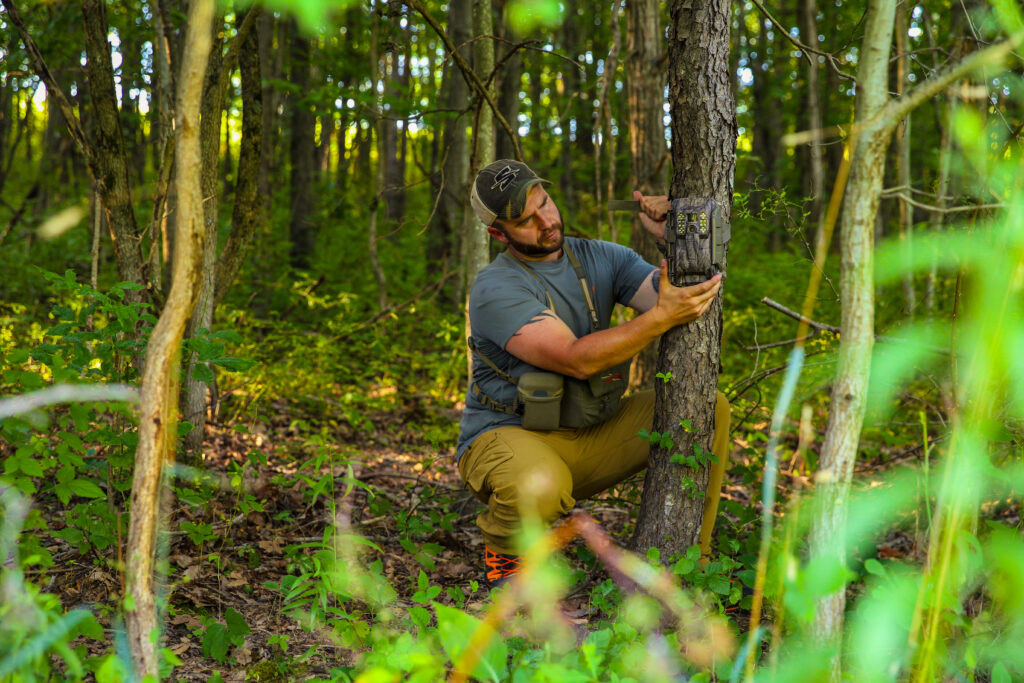
Cameras tell us a lot about a piece of property, and we need to pay attention to all of the details. Things like wind direction, moon phases, temperature, etc., should all be logged. Pay attention to these details when looking at pictures of deer. These clues will help us better understand how deer use your property and specific areas within the property. I will move cameras around as I see fit. I want to cover as much of the property as possible. This gives me a great view of this area’s deer movement, numbers, and quality.
Use The Glass
With a new property comes a lot of excitement. Still, we must remember that a plan of attack is much better than just diving in head first. An aggressive move like that could set you off on the wrong foot. We don’t want that! I like to work a property from the outside to the inside. What I mean by that is I try to do the majority of my initial scouting with as little intrusion as possible.
Glassing my property and even the surrounding properties from local roads in the mornings and evenings can provide me with valuable information before I make my hardcore hunting plans for this property.
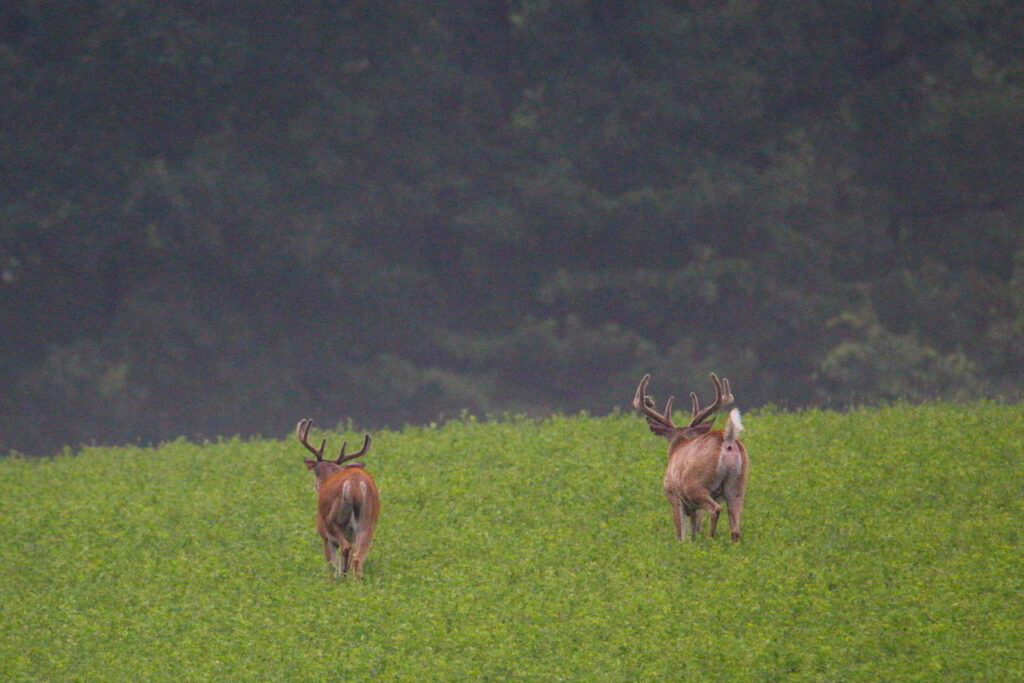
Depending on the time of year, certain foods will always be king, and if I can glass these hot food sources, that is exactly what I’ll be doing as often as possible. Glassing from a far-off distance provides a super, low-impact approach to seeing how deer use an area and what deer are around. I can judge the caliber of certain bucks, and if I find a buck that’s of the quality I want, I can start making plans to hunt him accordingly.

Boots On The Ground!
When it finally comes time to put boots on the ground, a strategic plan is necessary. Again, the time of year should dictate how much on-foot scouting you do. I know I sound like a broken record with this, but keeping a low human footprint is essential. Hopefully, you’ve done your homework online and already have predetermined areas that you have your eyes. Check out these areas first.
Make sure you’re marking all features on your phone app and taking notes as you scout. I like to run the tracker mode on my app while I scout to see my lines of travel and view what I’ve covered. For on-the-ground scouting, I am particular about what I want to achieve.
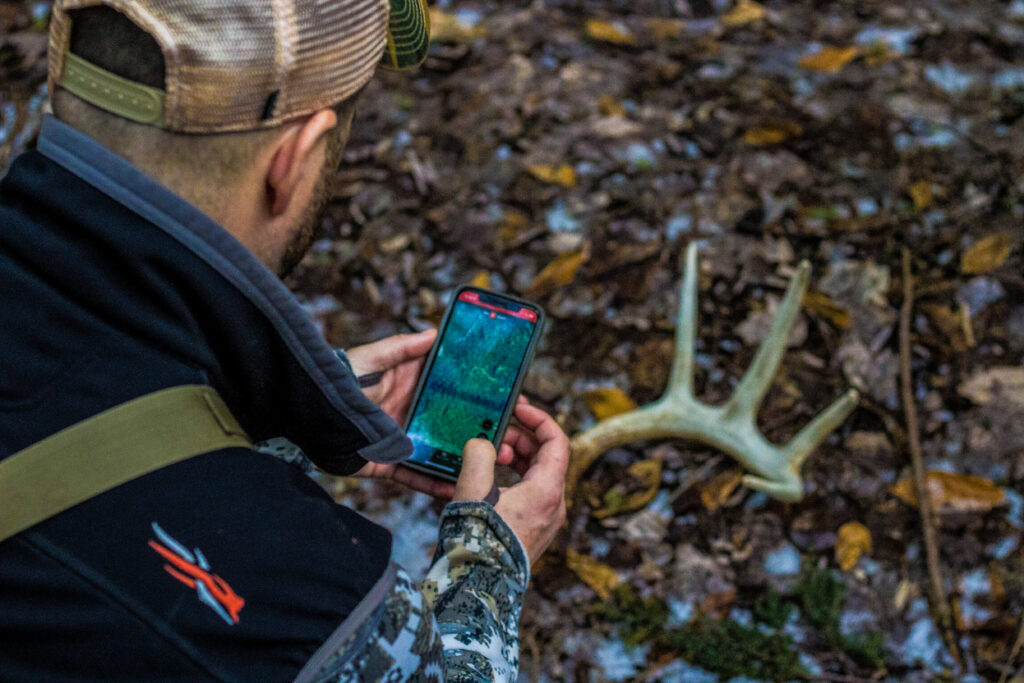
For example, if I’m looking for a stand site, I’ll have everything I need to hang a stand once I find a good spot. I don’t want to return to this area until I’m ready to hunt it. Or, I may even hang and hunt if it’s during the season. The same thing is true of how I use trail cameras. I always have an extra camera in my pack with me. The story’s moral is to be prepared for anything when scouting and make your trip count. Trips back and forth to home and the truck spread your human footprint and cost money. If you scout on foot with a purpose, you’ll get more done with better results!
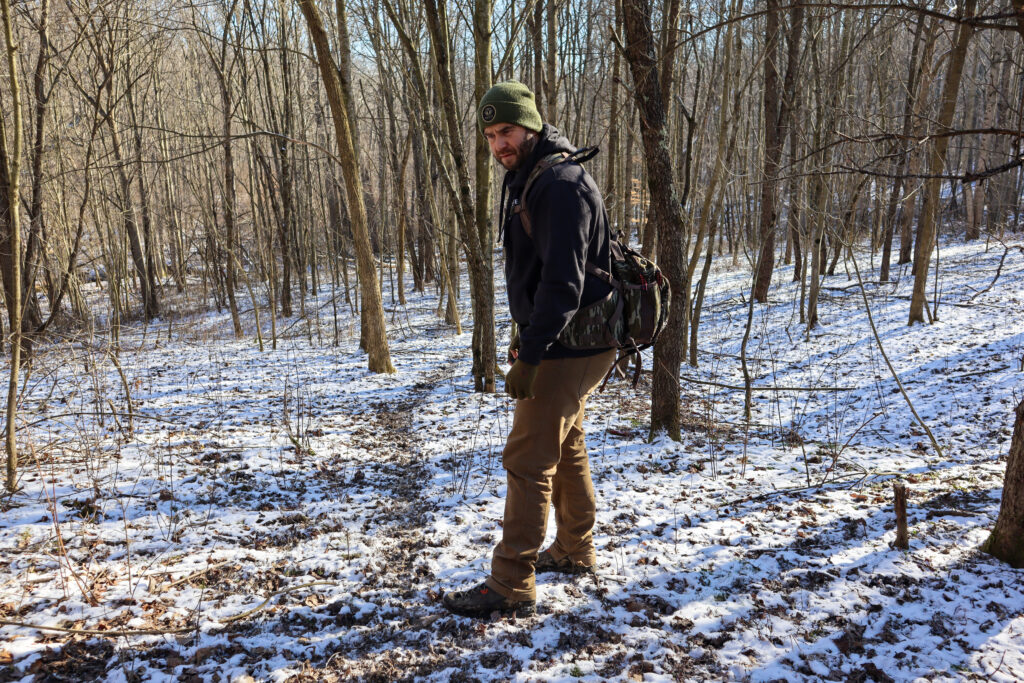
Putting It All Together
When it comes to a new whitetail property, it’s imperative to understand that many factors go into correctly learning and dissecting the property. Specific scouting methods, time of year, trail cameras, glassing, and eventually, boots on the ground will all factor into your strategy and success on a new property. Above all, remember to look at all the clues and ask yourself the “why” questions. Why was a deer here? Why do deer like to travel on a particular wind? Why am I not seeing deer in this area during daylight? It has often taken me years to figure out a property where I felt confident completely, so don’t get overwhelmed and frustrated! Instead, enjoy the process and be thankful for this great opportunity. Remember that the best way to learn about a property and its deer movement is to spend time scouting, hunting, and learning the property from trial and error. Good luck, and have FUN!
